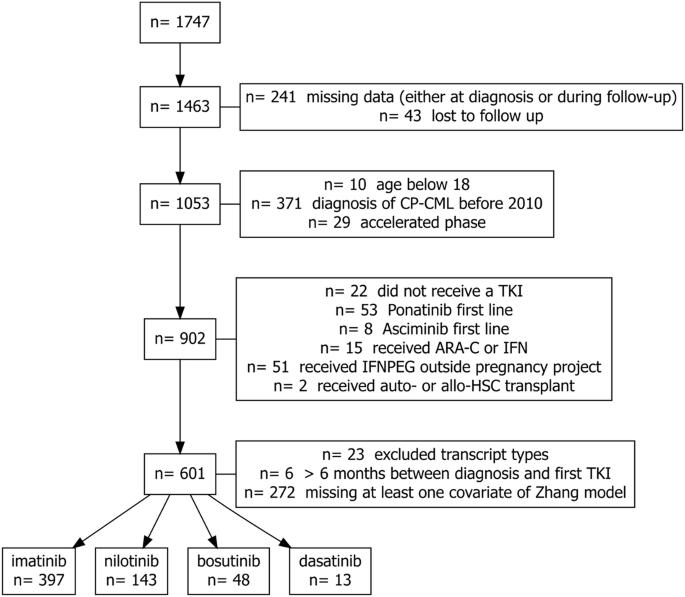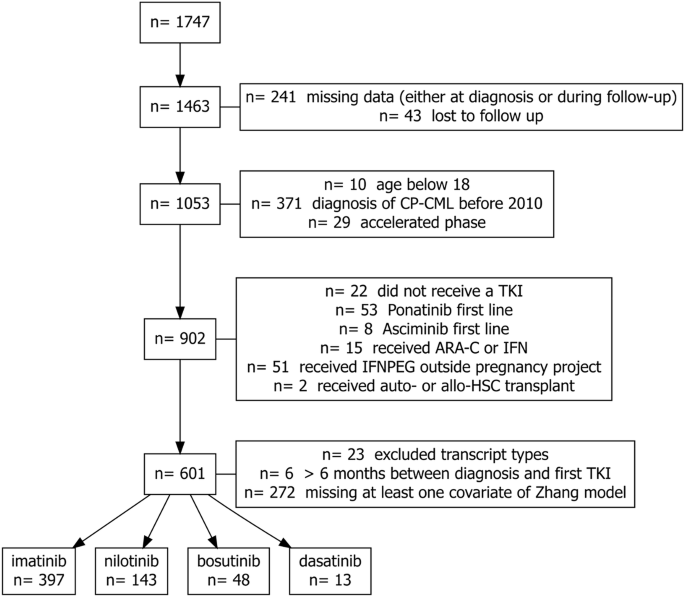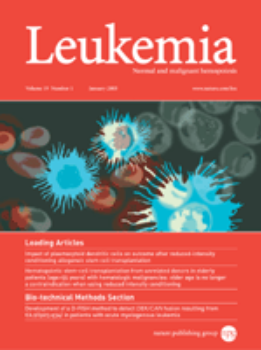评估欧洲型队列中酪氨酸激酶抑制剂治疗失败的预测模型:迈向人群特异性工具的一步
IF 13.4
1区 医学
Q1 HEMATOLOGY
引用次数: 0
摘要
预测使用酪氨酸激酶抑制剂(TKI)治疗的慢性粒细胞白血病(CP-CML)患者的治疗失败仍然是个性化护理管理的主要挑战。Sokal和EUTOS长期生存评分旨在预测cml相关的死亡率,但也用于指导治疗选择,尽管它们在这方面表现不佳。最近的一项研究提出了一种针对伊马替尼和第二代tki治疗患者的治疗失败的精细预测模型,该模型在中国队列中显示出有希望的结果。本研究在法国CML天文台的一个真实世界的多中心队列中评估了该预测模型的性能和适用性。中国和法国队列之间确定的关键差异(年龄、基线血红蛋白水平和治疗方案)可能影响模型的性能。具体来说,新模型不允许在法国队列中有效地区分风险群体。然而,使用该队列的模型重建确定了其他预测变量(性别、白细胞增多、合并症、高风险额外染色体异常),这些变量可以更好地对治疗失败风险的患者进行分层。我们的研究结果强调了人口统计学和临床差异对预测模型的影响,并强调需要当地或特定人群的工具来优化CP-CML的风险分层和治疗决策。本文章由计算机程序翻译,如有差异,请以英文原文为准。


Evaluating a predictive model of tyrosine kinase inhibitor therapy failure in a European-type cohort: a step towards population-specific tools
Predicting therapeutic failure in patients with chronic phase-chronic myeloid leukemia (CP-CML) treated with tyrosine kinase inhibitors (TKI) remains a major challenge for personalized care management. The Sokal and EUTOS long-term survival scores were designed to predict CML-related mortality, but are also used to guide therapeutic choices, despite their poor performance for this purpose. A recent study proposed a refined predictive model of therapy failure specifically tailored for patients treated with imatinib and second-generation TKIs that showed promising results in a Chinese cohort. The present study evaluated the performance and applicability of this predictive model in a real-world, multicenter cohort from the French CML Observatory. The key differences identified between the Chinese and French cohorts (age, baseline hemoglobin levels, and treatment regimens) likely influenced the model performance. Specifically, the new model did not allow for discriminating risk groups effectively in the French cohort. However, the model reconstruction using this cohort identified other predictive variables (sex, leukocytosis, comorbidities, high-risk additional chromosomal abnormalities) that better stratified patients at risk of therapy failure. Our findings highlight the influence of demographic and clinical differences on predictive models and emphasize the need for local or population-specific tools to optimize risk stratification and therapeutic decision-making in CP-CML.
求助全文
通过发布文献求助,成功后即可免费获取论文全文。
去求助
来源期刊

Leukemia
医学-血液学
CiteScore
18.10
自引率
3.50%
发文量
270
审稿时长
3-6 weeks
期刊介绍:
Title: Leukemia
Journal Overview:
Publishes high-quality, peer-reviewed research
Covers all aspects of research and treatment of leukemia and allied diseases
Includes studies of normal hemopoiesis due to comparative relevance
Topics of Interest:
Oncogenes
Growth factors
Stem cells
Leukemia genomics
Cell cycle
Signal transduction
Molecular targets for therapy
And more
Content Types:
Original research articles
Reviews
Letters
Correspondence
Comments elaborating on significant advances and covering topical issues
 求助内容:
求助内容: 应助结果提醒方式:
应助结果提醒方式:


